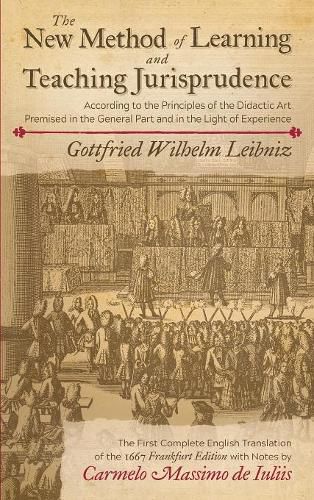This title is printed to order. This book may have been self-published. If so, we cannot guarantee the quality of the content. In the main most books will have gone through the editing process however some may not. We therefore suggest that you be aware of this before ordering this book. If in doubt check either the author or publisher’s details as we are unable to accept any returns unless they are faulty. Please contact us if you have any questions.
The first complete English translation from the Latin of Gottfried Wilhelm Liebniz’s Nova methodus discendae docendaeque Jurisprudentiae. lxxxvii, 218 pp. Preface by William E. Butler. Better known for his contributions to philosophy, metaphysics and mathematics as co-discoverer along with Isaac Newton of calculus, Gottfried Wilhelm Leibniz was also an attorney, diplomat, state official and judge of the Mainz court of appeals. The New Method of Learning and Teaching Jurisprudence is his prescription for a curriculum of study for lawyers and as such is an important indicator of the origins of legal education in the late renaissance year of 1667, when John Milton published Paradise Lost. Already translated into German and French, this is the first unabridged translation of the 1667 Frankfurt edition in a modern language, a new direct translation of the Latin text with notes by Carmelo Massimo de Iuliis (Department of Public and Private Economy Law, Universita Cattolica del Sacro Cuore, Milano). The translation is enhanced by De Iuliis’ introduction that offers a biographical sketch of Leibniz, an overview of the reception of his ideas, and a discussion of Leibniz’ views on the philosophical concepts of logic and rhetoric as applied to the study of jurisprudence and a systematic reconstruction of legal systems. Published by Talbot Publishing, an imprint of the Lawbook Exchange, Ltd.





